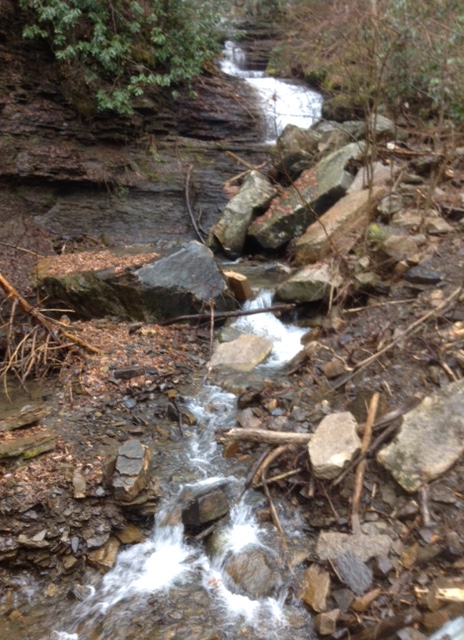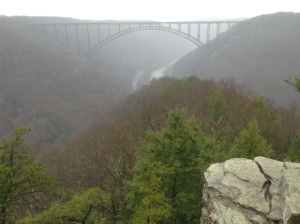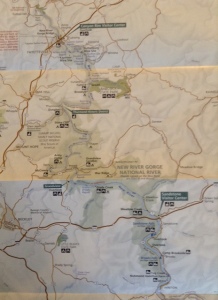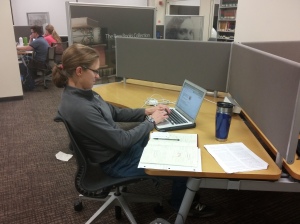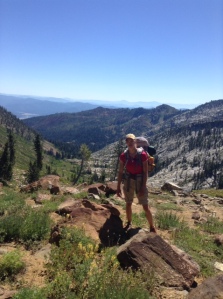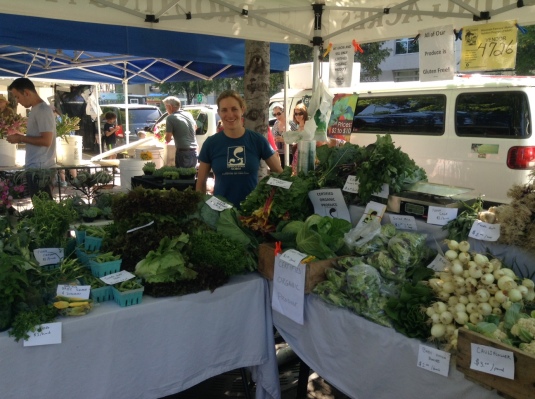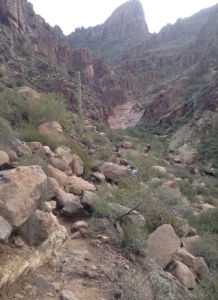
If You are Sick or Injured and Don’t Know It
Recently, I got to spend some time with a good friend and her 1-year-old son. As a young child, if your parents’ friends come to visit, you are absolutely and without a doubt the center of attention. So, we were all watching this super cute kiddo standing up and trying to balance in various positions and as he was doing this, he slipped and bonked his head a little bit on the step he was standing near.
In that moment, all of the adults in the room kind of did the mental math to compute that the fall was minor and so nobody was worried about a serious injury. You could tell that the little guy could have cried, but after gauging our reactions (I’m obviously inferring here, he didn’t tell us this), he went right back to exploring his balancing world.
I was thinking about this relatively minor event and its implications for a greater question that has been on my mind: How do other people’s reactions to your injury affect your experience of that injury? For example, say this kid we were watching actually did get hurt as he fell but the adults in the room didn’t think that he did. Would our reactions be enough to preserve the child’s experience of wellness? Would he fail to experience any pain or other symptoms or would the physical damage outweigh our psychological contribution to his reaction?
As we know, one’s experience of pain is very dependent on contextual factors, but exactly how much weight does knowing or thinking that you are injured have on your experience of injury? More specifically, I am curious about two particular situations of not knowing:
1- you are sick and other people lie to you about your illness (i.e., you are blissfully ignorant of your health problem)
2- you are sick and your brain seems to deny the presence of an illness (termed anosognosia or “denial syndrome”)
Other People are Lying to You
I listened to an episode of This American Life podcast (the episode “In Defense of Ignorance”) that presented an account of medical diagnoses that were actually withheld from the ill family member, even in serious cases like lung cancer. There were children who had made the decision that it was better for a mother or grandmother to not be told that she had cancer! My initial reaction was one of slight outrage. But, I continued to listen and I may have changed my mind to a more firm position of, “I really have no idea what is right in these situations”. Truly, it is very difficult to judge what is appropriate behavior for another person in negotiating the illness of his or her family member. There are various arguments for keeping health information from a family member, but one of them goes something like this: If an aging parent or grandparent were to know about the diagnosis of a terminal illness (in cases that are untreatable), it would just add to his emotional burden of stress and it would give him a reason to physically deteriorate or experience some of the natural symptoms of aging as catastrophic and illness-related. Keeping the diagnosis from him will allow him to live out his life with peace of mind and also to not succumb to the illness as quickly because the added stress and psychological contributing factors have been removed.
Obviously, this situation is complicated by the ethical implications of lying to a family member and taking away his or her autonomy of choice. But, to be honest there is something attractive about trying to protect a loved one from having to mentally deal with such a serious illness (assuming there is really no proactive treatment that will help the condition). It reminds me of the power of placebo treatments and the somewhat sticky debate of how adamant to be about the abolishment of all treatments that may work via placebo. After all, if a patient believes in a treatment and it works, how much should we really cling to the need for a scientifically proven mechanism of action?
Your Brain is Lying to You
Reading about the accounts of patients with anosognosia is a little bit like watching The Matrix. It leaves you very uncertain about what is actually “real” and it starts to illuminate the great complexity with which each of our brains constructs our own “reality.” As I’ve written about before, our perceptions may not necessarily reflect an ultimate or “true” form of reality. Anosognosia is the phenomenon where a patient denys an observed injury or deficit and is most often described in hemiplegic (half-paralyzed) patients that have suffered a stroke (i.e., the patient’s left side is paralyzed but she denies this to be true).2
In his book, “Phantoms in the Brain,” Neuroscientist V.S. Ramachandran describes the case of a woman who has anosognosia following a stroke.3 The woman blatantly denies that she has any movement deficiencies despite having lost the ability to move her left arm and left leg. She vehemently challenges Dr. Ramachandran’s assertions that her left arm and leg are paralyzed even as he asks her to touch his finger with her left finger (her hand lays at her side, but she claims it is touching his) and to stand up and walk (she has been in a wheel chair since the stroke and is unable to walk but is impatient when Dr. Ramachandran suggests that she cannot walk). Why would one’s own knowledge of physical ability be so impaired? Ramachandran acknowledges that there may be some component of psychological denial, but with a few elegant experiments he also shows that these patient’s are not just lying, they actually have deficits in their ability to accurately perceive their own deficits. The brain is complex indeed.
What is the Right Amount of Knowledge?
As these instances suggest, there are cases in which a person may be largely ignorant about the presence of an injury or illness. Conversely, at the far other end of the spectrum is the situation in which a person could have an overabundance of information. I am immediately reminded of a book that came out this year called: “When Breath Becomes Air,” which is the account of Paul Kalanithi’s struggle with his own mortality as he is diagnosed with lung cancer as a young neurosurgery resident. Here is a man with an incredible amount of medical knowledge experiencing the terrors of cancer from both the perspective of patient and with the training of a medical doctor. He acknowledges an almost obsessive desire to know the probability of how long he has to live, while concurrently acknowledging the limitations of medical diagnosis and prognosis. The book is particularly poignant because of the author’s dire situation (in fact he passed away before the book was finished, and it was published posthumously) as well as his incredibly thoughtful and empathic interactions with patients, even before his diagnosis.
As Paul describes communicating with patients and their families, he writes: “a tureen of tragedy was best allotted by the spoonful.” This insightful statement comes about from his experience in delivering bad news and his finding that much of what was told to patients and their families immediately following a grave diagnosis or prognosis was not remembered and would need to be subsequently repeated. People, it seems have a limit to the information that they can process in the midst of trauma and trying situations.
I don’t really have a definitive answer for the optimum amount of knowledge in injury or illness, and maybe each person is unique in what he or she would prefer or benefit from. However, I will say that in the case of one’s own illness and injury, it may be wise to question the amount of knowledge that is actually needed for optimum health. Perhaps in this situation, as in many others in life, more may not always be better.
References:
1- Kalanithi, P. When Breath Becomes Air. New York, Random House; 2016.
2- Orfei MD, Robinson RG, Prigatano GP, Starkstein S, Rusch N, Bria P, Caltagirone C, Spalletta G. Anosognosia for hemiplegia after stroke is a multifaceted phenomenon: a systematic review of the literature. Brain. 2007; 130, 3075-3090.
3- Ramachandran, V S and Blakeslee, S. Phantoms in the Brain: Probing the Mysteries of the Human Mind. New York, William Morrow, 1998.
4– This American Life Podcast, episode #585: ”In Defense of Ignorance”
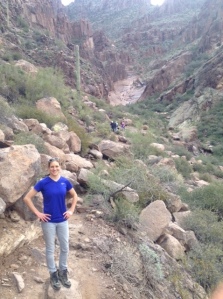
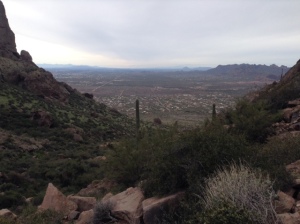
Here I am on a recent hike going up a rocky scramble for 2,800 ft. elevation gain near Phoenix, AZ. Not knowing what was coming, it was challenging and enjoyable. Would it have been less or more so if I would have known how hard of a climb it was to the top of this peak?
